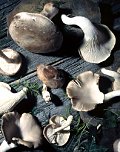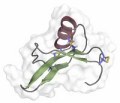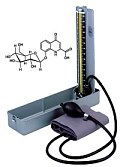 A mixed bag this week in my Alchemist column on ChemWeb.com this week. First up, news that US$1 million is to be ploughed into biofuels research that could circumvent some of the serious environmental concerns associated with this renewable energy source.
A mixed bag this week in my Alchemist column on ChemWeb.com this week. First up, news that US$1 million is to be ploughed into biofuels research that could circumvent some of the serious environmental concerns associated with this renewable energy source.
In the world of pharmaceuticals we discover that there might be yet another string to the bow of aspirin-like drugs, this time in the fight against breast cancer. There’s good chemical news for those hoping to save Gulf Coast Wetlands from the rampages of the coypu with the discovery of a chemical lure, The Alchemist also hears of a novel system of surfactants and gelating agents that can form separate compartmentalized structures resembling the organelles in a living cell. You might care to have a drink with The Alchemist this week in celebration of a clearer understanding of why some drinks, such as ouzo, form cloudy emulsions with water. There’s more on the ouzo effect in my SpectroscopyNOW story on the subject where an independent team working in parallel have used NMR to take a look at these rare and peculiar emulsions.
Finally, a little kitchen chemistry could give your French fries a little je ne c’est quoi.

Speaking of haute cuisine…also on this week’s SpectroscopyNOW, I report on how Portuguese scientists have identified a whole range of smelly molecules found in wild edible mushrooms. It’s pioneering work that will allow the food industry to ensure it is not being fobbed off with cheap mushrooms when a more expensive variety is what they ordered. The results could also be used by biotechnologists to engineer specific flavours into easily cultivatable varieties of mushroom. Two points arose as I was writing the item: The first is that overall mushrooms smell of nothing more complex than 1-octen-3-ol, which the researchers describe helpfully as having a mushroom-like odour. Secondly, the notion of cultivating wild things is at odds with the whole ethos of wild mushrooms, surely?
Either way, it’s hopefully an interesting read. Now, pass the ketchup for my mushrooms and fries, would ya?
 However, I want to step back a little with respect to that video games research. The team used the apparently powerful technique of functional MRI (basically a brain scan that can spot changes and lights up active regions of the brain). The researchers devised a very simple computer game, a kind of cross between Tetris and Pong (without the bats). To win you had to gain territory. The researchers scanned the brains of males and females while they played this game. Their results showed that men and women got the game, but the men were sharper when it came to realising you had to use a particular strategy to gain the most territory.
However, I want to step back a little with respect to that video games research. The team used the apparently powerful technique of functional MRI (basically a brain scan that can spot changes and lights up active regions of the brain). The researchers devised a very simple computer game, a kind of cross between Tetris and Pong (without the bats). To win you had to gain territory. The researchers scanned the brains of males and females while they played this game. Their results showed that men and women got the game, but the men were sharper when it came to realising you had to use a particular strategy to gain the most territory.





